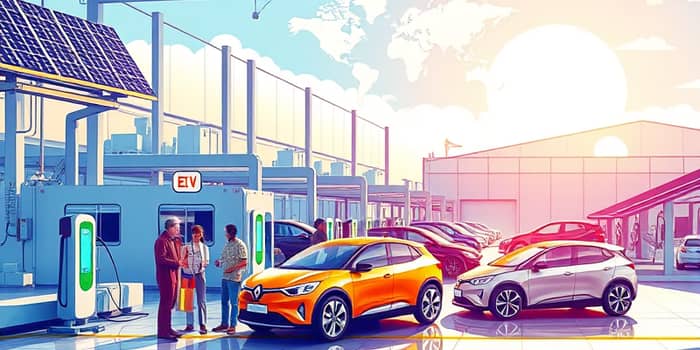
The global automotive landscape is undergoing a seismic shift as electrification drives a new era of collaboration and consolidation. Against a backdrop of regulatory flux, geopolitical tensions and shifting consumer expectations, mergers and acquisitions are emerging as the catalyst for strategic growth and technological leadership.
Electrification is not merely an engineering upgrade; it represents a complete reimagining of the value chain. Traditional automakers face the dual burden of electrification and ICE businesses, requiring massive capital investments and new skill sets. Suppliers, meanwhile, must evolve from producing mechanical components to delivering sophisticated battery systems and software.
As a result, companies are pursuing deals that bring them closer to the core technologies defining the future of mobility. Strategic partnerships, joint ventures and full acquisitions are all on the table, driven by the need for scale, access to innovation and resilient supply chains.
The auto sector saw M&A values plunge by nearly 80% in the first three quarters of 2024, while deal volumes dropped by some 60%. Uncertainty around emissions regulations, EV ramp-up curves and trade barriers were key drivers of this slowdown.
Yet, the outlook for 2025 is decidedly brighter. With valuations down by up to 20% on a diligence-adjusted basis, investors and strategic buyers are eyeing opportunities in distressed suppliers, software platforms and battery makers. There is underlying pressure for consolidation and a renewed focus on portfolio reshaping rather than short-term cost cuts.
The M&A landscape varies significantly across Europe, the U.S. and China. European OEMs, under stringent emissions targets, are aggressively rolling out EV line-ups and seeking scale through cross-border deals. In the United States, political and regulatory shifts create caution, although EV shipments are forecast to grow by 17% in 2025. Chinese players leverage vertical integration and cost advantages to dominate software and battery innovation, even as Western trade barriers tighten.
Several forces are converging to accelerate M&A activity:
Despite the momentum, several headwinds could temper dealmaking. Regulatory frameworks remain in flux, with sudden changes to incentives and emissions standards causing companies to hesitate. Geopolitical tensions, particularly between China and Western markets, threaten cross-border transactions and supply chain stability. On the technology front, debate rages over open versus proprietary architectures and the optimal battery chemistries to support long-term growth.
To succeed, executives must adopt a flexible deal strategy, combining nimble alliance models with targeted acquisitions. Scenario planning and robust due diligence will be critical to account for shifting policy landscapes and technology roadmaps.
As electrification advances, the auto sector must embrace a new playbook for value creation. Companies that strike the right balance between scale and agility will emerge as leaders. Here are key considerations:
Ultimately, successful M&A strategies will be those that align with a bold vision for a decarbonized, software-defined future. By combining resources, knowledge and market access, industry players can navigate uncertainty and drive profitable growth.
The road ahead is challenging, but the opportunities for transformation and leadership have never been greater. With the right strategic moves, the auto sector can ensure that electrification not only reshapes our roads but also delivers lasting value for companies, consumers and the planet.
References













